This photograph was taken in 1882. It shows Venus during the transit of 1882. The big white circle is the Sun. Venus is the black dot on the Sun. Venus is near the top of the Sun, just left of center.
Click on image for full size
Image courtesy the U.S. Naval Observatory Library.
History of Venus Transits
Sometimes Venus passes between Earth and the Sun. This event is called a transit
of Venus. Transits of Venus don't happen very often. There is a pattern
in the time between transits of Venus. The pattern goes like this: after one
transit there is another one eight years later, then more than 100 years go
by, then another transit and then another eight years after that, then another
wait of over 100 years, and so on.
The last Venus transit was in 1882. There are two coming up soon, on June
8, 2004 and June
6, 2012. After that there will be a long wait until the next transits. The next
ones after 2012 will be on December 11, 2117 and December 8, 2125
There have only been six Venus transits so far since people
started using telescopes to look at the sky. Those six were in the years
1631, 1639, 1761, 1769, 1874, and 1882.
A couple hundred years ago people didn't really know how
far the Earth is from the Sun or how
big our Solar System is. Astronomers were able to find
out those distances by making measurements during Venus transits. They had
to make measurements from many different places on Earth. During the Venus
transits in the 1700s and 1800s, scientists made those measurements from
many places on Earth. They were able to figure out that Earth is about 150
million kilometers (93 million miles) from the Sun.
You might also be interested in:
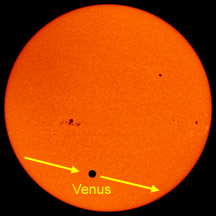
Sometimes the planet Venus gets between Earth and the Sun. Astronomers call that a "transit" of Venus. A transit is a little bit like an eclipse of the Sun, when the Moon gets between Earth and the Sun.
...more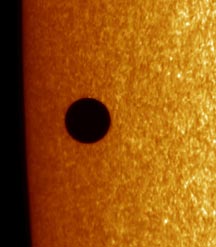
A "transit" is the name of a type of astronomical event. A transit is like a solar eclipse, when the moon blocks out the Sun. During a transit a planet, not the Moon, moves between Earth and the Sun. There
...more
Astronomers are excited about a rare event that will happen in early June 2004. There will be a transit of the planet Venus on June 8, 2004. "Transit" is a word used by astronomers when a planet moves
...more
The planet Mercury will cross in front of the Sun on Wednesday, November 8, 2006. Astronomers call the event a transit. A transit is like a solar eclipse. However, a transit occurs when a planet, instead
...more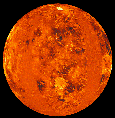
Venus is the second planet from the Sun, and is Earth's closest neighbor in the solar system. Venus is the brightest object in the sky after the Sun and the Moon, and sometimes looks like a bright star
...more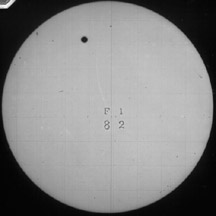
Sometimes Venus passes between Earth and the Sun. This event is called a transit of Venus. Transits of Venus don't happen very often. There is a pattern in the time between transits of Venus. The pattern
...more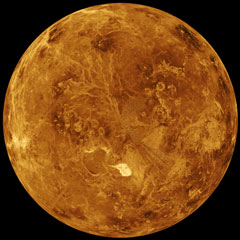
Venus is the hottest planet in our Solar System. On Earth, places near the equator are much warmer than places near the poles. On Venus, it is really hot everywhere... even at the North and South Poles.
...more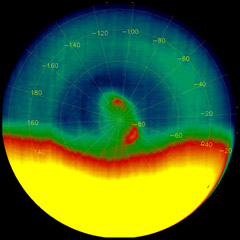
A vortex is a swirling, circular movement of air and clouds... like in a tornado or hurricane. The plural form of vortex is "vortices". The planet Venus has vortices in its atmosphere above each of its
...more












